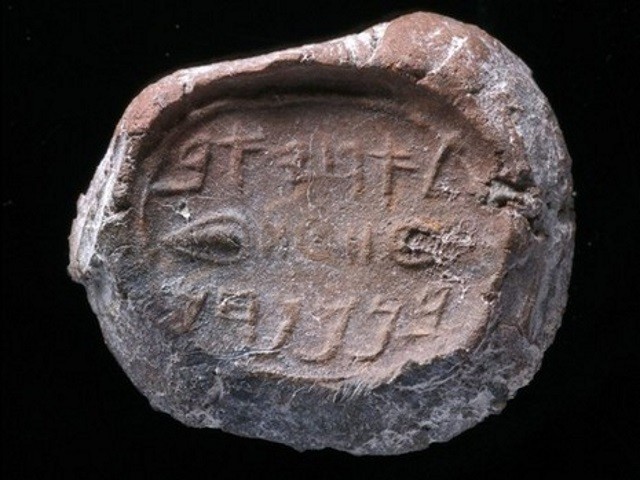Who was Achiav ben Menachem? Recently discovered “bullae” from the late First Temple period shed light on the bureaucracy and officials of ancient Jerusalem.
A collection of dozens of seals mentioning the names of officials dating to the days of the Judean kingdom prior to its destruction by the Babylonians was recently unearthed during excavations by the Israel Antiquities Authority (IAA) in the City of David within Jerusalem’s Old City.
The objects, called “bullae,” are small pieces of clay which in ancient times served as seals for letters. A letter which arrived with its seal broken was a sign that the letter had been opened before reaching its destination.
Although letters did not survive the terrible fire which consumed Jerusalem during its destruction, the seals, which were made of a durable material that is similar to pottery, were actually well preserved thanks to the fire, and attest to the existence of the letters and their senders.
Ortal Chalaf and Dr. Joe Uziel, the IAA directors of the excavation, explained that dozens of seals were unearthed in the numerous excavations at the City of David, “bearing witness to the developed administration of the city in the First Temple period.”
“The earliest seals bear mostly a series of pictures. It appears that instead of writing the names of the clerks, symbols were used to show who the signatory was, or what he was sealing,” the Israeli archaeologists explained.
In later stages of the period, from the time of King Hezekiah around 700 BCE and up to the destruction of Jerusalem in 586 BCE, the seals bore the names of clerks in early Hebrew script.
Deeper Understanding of Ancient Jerusalem
“Through these findings, we learn not only about the developed administrative systems in the city, but also about the residents and those who served in the civil service,” they added.
Some of the seals bear biblical names, several of which are still used today, such as Pinchas.
One particularly interesting seal mentions a man by the name of Achiav ben Menachem. These two names are known in the context of the Kingdom of Israel. Menachem was one of the kings of Israel, while Achiav does not appear in the Bible, but resembles the name of Achav (Ahab), the infamous king of Israel from the time of the prophet Elijah. Though the spelling of the name differs, it appears to be the same name, the archaeologists said.
Chalaf and Uziel highlighted that the appearance of the name Achiav is interesting because it serves as further testimony to the names which are familiar to us from the Bible.
“These names are part of the evidence that after the exile of the [10] Tribes of Israel, refugees arrived in Jerusalem from the northern kingdom, and found their way into senior positions in Jerusalem’s administration,” they explained.
By: World Israel News Staff


